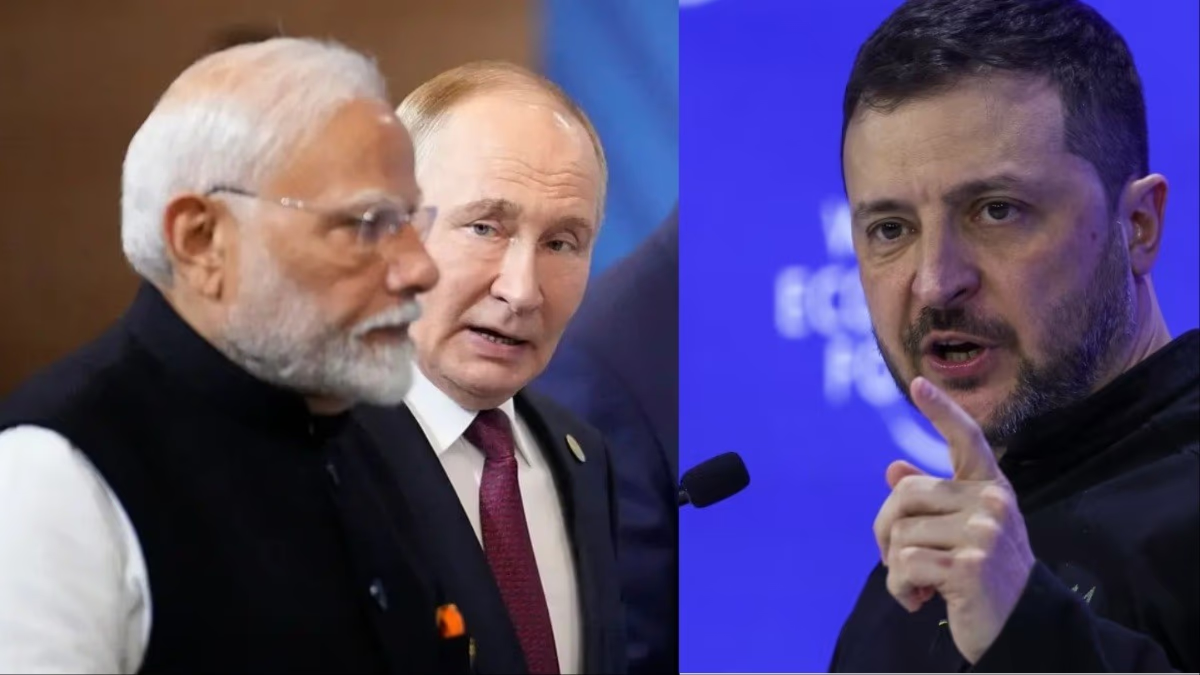Ukraine has raised the issue with India that electronics made in India are being used in drones employed by the Russian military against Ukraine. Ukraine has identified some firms in India whose components are being utilized in Iranian drones used by Russia against Ukraine.
Hindustan Times has examined documents showing that since last year, Iranian Shahed drones used by the Russian military contain Indian components. Last year, Indian components were found in unmanned Shahed 136 drones, prompting Ukraine to lodge at least two formal diplomatic protests with the Ministry of External Affairs.
Sources, speaking anonymously, disclosed that Ukrainian diplomats raised this issue during David O'Sullivan's visit to New Delhi in mid-July. O'Sullivan, representing the EU, visited India to discuss a new EU sanctions package, which included Rosneft's Vadinar Refinery and restrictions on refined products made from Russian crude.
The investigative report submitted by Ukrainian officials revealed that electronic parts from Vishay Intertechnology and Aura Semiconductor, either assembled or made in India, were used in Shahed 136 drones. The documents included detailed information on and images of the specific components involved.
According to documents, the 'Bridge Rectifier E300359' from Vishay Intertechnology was employed in the Shahed's voltage regulator unit, while Aura Semiconductor's PLL-based signal generator AU5426A chip was used for the drone's satellite navigation system's jammer-proof antenna.
Technical experts note that companies did not violate any Indian laws on purely technical grounds.
Commenting on the matter, Foreign Ministry spokesperson Randhir Jaiswal stated, "Exports of dual-use items are in accordance with India's international non-proliferation commitments and comply with robust domestic laws. We ensure thorough scrutiny to prevent any law violations through exports."
The Ukrainian embassy in New Delhi has not released an official statement, although Ukraine's Defense Intelligence Directorate (HUR) reported the presence of Indian-origin parts in Shahed drones on its official Facebook page and Telegram channel.
Vishay Intertechnology, an American company specializing in chips, optoelectronics, and sensors, has declined to comment. Meanwhile, Kishore Ganti, co-founder of Aura Semiconductor Pvt. Ltd., stated that the company ensures its products are used legally and ethically, adhering to both national and international export control laws.
Aura Semiconductor expressed concerns in a statement, emphasizing their strong opposition to any unauthorized distribution channels that might have violated their stated terms and distribution agreements. The company indicated that action would be taken wherever compliance lapses are identified.
Iranian Shahed drones are relatively inexpensive, and Russia has deployed large numbers since late 2022 to target Ukraine. According to Ukraine's Security Service (SBU), Iran initially supplied Russia with 2,000 fully assembled drones, and Russia later established its assembly system using Iranian components. Ukrainian Air Force data shows that Russia launched 6,129 Shahed-type drones in July.
Ukraine's Defense Intelligence Directorate also reported finding American and Chinese electronic equipment on Russian drones and other weapons.
Ajay Srivastava, founder of the Global Trade Research Initiative (GTRI), commented that foreign buyers might be sending these parts to Iran through third countries. He explained, "India has strict controls on exporting dual-use items to restricted countries. However, once legally exported to third countries, tracking their end-use becomes nearly impossible, presenting a constant challenge for open economies."




